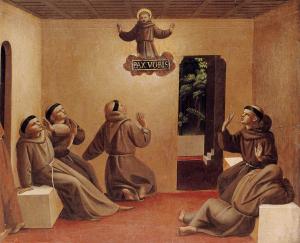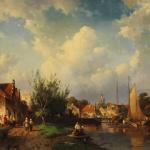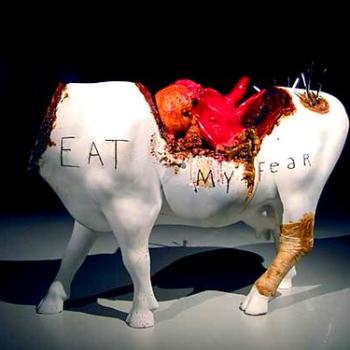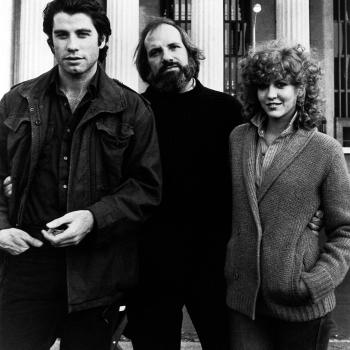
No, not the pope, but the friar. St. Francis of Assisi, founder of the Franciscan Order. That’s who I have in mind as I dredge up what seems like a half-dead, but still gasping, conversation about Rod Dreher’s The Benedict Option.
Why now? As many of you know, I work on medieval mysticism. This means that I have to spend time (and I ought to spend more time) reading about the history of the Middle Ages. Recently, I was reading Bernard’s McGinn’s The Flowering of Mysticism, which is largely concerned with the period after 1200, in which new forms and varieties of mysticism came to fruition. He talks about the emergence of mendicant movements (i.e. friars), more specifically about why they came into being.
The story he tells strikes me as rich in importance for what Christians ought to do (or at least what they’re being told they ought to do) today. Why? Well, going through the story may help us catch a glimpse.
McGinn is clear that their emergence is a multifaceted phenomenon. In part, the friars came into existence because of a renewed desire to live the vita apostolica; they wanted to emphasize Apostolic poverty in the context of a seemingly-corrupt and decadent world. But, for our purposes, what matters most is their pastoral function. In 1215, the Fourth Lateran Council made yearly confession mandatory. It did much, but has become known among medieval historians as something of a “pastoral council”:
-
Canon 21, the famous “Omnis utriusque sexus”, which commands every Christian who has reached the years of discretion to confess all his, or her, sins at least once a year to his, or her, own (i.e. parish) priest. This canon did no more than confirm earlier legislation and custom, and has been often but wrongly, quoted as commanding for the first time the use of sacramental confession.
-
Canon 22: Before prescribing for the sick, physicians shall be bound under pain of exclusion from the Church, to exhort their patients to call in a priest, and thus provide for their spiritual welfare. (New Advent)
Among the things it sought to address was an increasingly urban population. In early medieval Europe, most people were serfs living on estates, not people in towns. As the continent urbanized, however, new forms of life developed to adapt to the new conditions. Beguines and Beghards tried to live righteously in city centers and friars moved to provide spiritual care to the peoples of Europe’s growing towns. The High Middle Ages (roughly 1000-1300) are noted for just these sorts of economic changes:
During the 11th century, however, feudal life began to change. Agricultural innovations such as the heavy plow and three-field crop rotation made farming more efficient and productive, so fewer farm workers were needed–but thanks to the expanded and improved food supply, the population grew. As a result, more and more people were drawn to towns and cities. Meanwhile, the Crusades had expanded trade routes to the East and given Europeans a taste for imported goods such as wine, olive oil and luxurious textiles. As the commercial economy developed, port cities in particular thrived. By 1300, there were some 15 cities in Europe with a population of more than 50,000. (History.com)
These developments meant further changes in how people perceived the vita apostolica. While theologians had long opined that some version of the “mixed life” was best (a mixture of the contemplative and active), the highest vocations were still thought to be monastic, that is, by-and-large contemplative. What the mendicant orders sought was a way to find the height of life in the activities of the world, to learn to contemplate, so to speak, in action. Older forms of monastic theology (most famously discussed by Jean Leclerq) gave way to Scholasticism (with its greater emphasis, in part due to its reliance on Aristotle, on action and ethics—think of the many ethical questions addressed by St. Thomas in the Summa). Most early medieval philosophical and theological thought comes from these contemplative, monastic backgrounds; now, however, friars living in the world began to minister to its people and write theology. We can see this in Meister Eckhart’s radical re-evaluation of the Mary-Martha pericope:
But Martha stood there in her essence, and hence she said, “Lord, bid her get up”, as if to say “Lord, I do not like her sitting there just for joy. I want her to learn life and possess it in essence: bid her arise that she may be perfect.” (Sermon 9)













